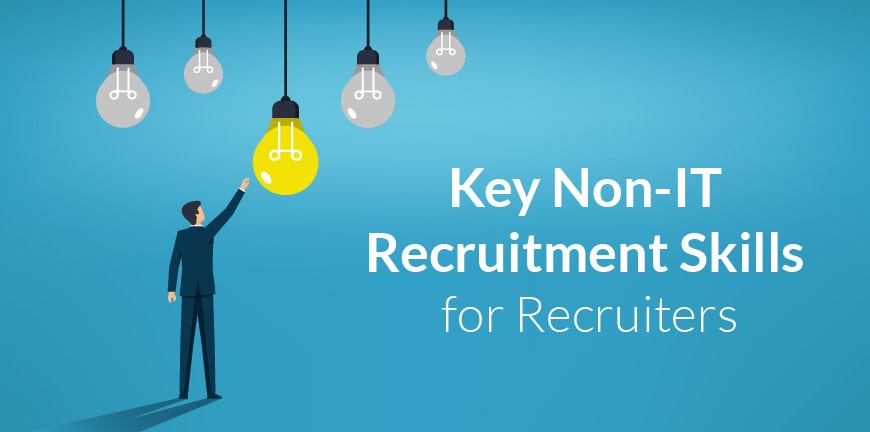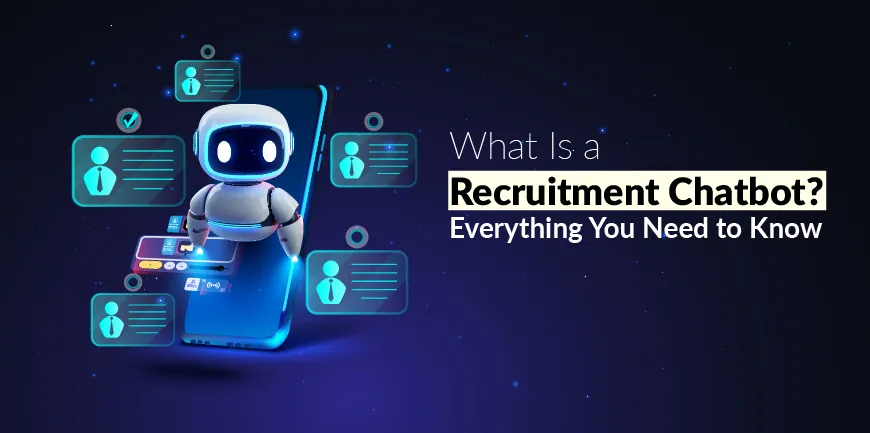
How Companies Can Benefit from the National Apprenticeship Promotion Scheme?
20/08/2025
What is Staffing? The Ultimate Guide for Businesses (2025)
20/08/2025Former GE CEO, Lawrence Bossidy, said, “I’m convinced that nothing we do is more important than hiring and developing people. At the end of the day, you bet on people, not on strategies. “
Skills-based recruitment is not a trending HR catchline; it is subtly becoming the factor that will drive the new talent operating system. There is a new wave hitting the HR shore, which is the unlocking of hidden talent banks by finding the right matches with precision for suitable job roles.
More varied and adaptable teams are being created with the help of innovative methods and modern tech.
Yet, the twist is that even though there is great potential, most organizations are still only dallying with the concept and are unsure of the outcome.
Why skills-first, and Why Now?
- New skill requirement: According to studies, this decade is set to witness a major shift in skills as per the expectations of employers.
Skills like analytical and creative thinking, AI, and data literacy are among the fastest-rising demands, and six out of ten employees will have to be trained in these domains by 2027.
- Access to wider talent banks: Skills-based approaches can unlock a much larger candidate pool. LinkedIn data suggests growth up to 10× is possible if you focus on skills rather than background.
- Mindset Rejig: Many big employers have become lenient with degree screenings for selected roles, and public-sector leaders are speaking up:
“We’re removing our degree requirements… It doesn’t matter if you learned on YouTube or at Harvard, as long as you can do it.” A statement by Michaela Doelman, Washington State CHRO.
Why must HR care?
1. Larger and diverse candidate pools
If you, as an organization, recognize the importance of prioritizing skills over stringent credentials, you will have access to a larger and more diverse pool of talent.
There will be a flow of non-traditional professionals, including Gen Zs, who possess expertise in niche skills and project-based work, but are often overlooked.
According to surveys, a substantial number of employers plan to drop degree requirements for some roles by 2025. One poll suggests one in four say they will eliminate degrees from their hiring process.
2. Enhanced productivity with better matching of roles
Job responsibilities are provided by organizations that have been directly assessed and checked by them. This is where the turn of events occurs when companies are no longer filling vacancies but intelligently placing individuals. The placement of professionals directly impacts business outcomes.
3. Fair approach and strong employer brand
The scraping of unwanted degree requisites today is more than just a recruitment strategy. It indicates that your company encourages unbiasedness and inclusion.
Several proficient candidates are unable to compete, and they don’t get a chance to showcase their talent due to the invisible roadblock created by credential-led recruitment methods. Employers must design plans to embrace skilled individuals through alternative routes.
What are the Challenges on the Path to Skills-based Hiring?
1. Clearly outlining skills and maintaining uniformity
One of the biggest challenges companies are facing today is the inconsistencies in defining specific skills across departments.
There is confusion playing between individuals on the definition of skills as they have different connotations for different people. There is a lot of miscommunication and misinterpretations as roles seem vague.
There must be a well-designed shared structure where all departments are in alignment with job descriptions, team needs, and performance assessments.
2. Creating reliable, fair assessments
Skills-based hiring is successful when the accurate measurement of what individuals can do is deciphered.
Tests and evaluations based more on theoretical knowledge and less on real-world scenarios hinder the process.
Other factors can be misleading, like languages or background references that might facilitate favouritism.
Assessments that adversely impact candidates with disabilities or people who have poor internet connections, etc.
3. Revamping job descriptions and ATS configurations
Shifting to skills-based recruitment might mean for businesses that most of the existing job descriptions and applicant tracking systems are not suitable for the current purpose.
Job descriptions are required to be altered, and emphasis must be on output and not qualifications.
The alignment of ATS, the job description, to hiring methods is essential as it will automatically reduce the risk of bias, and the talent base is also widened.
4. Converting the mindsets of hiring managers
There can be changes and alterations made in the assessments and applicant tracking systems, but no transformation is possible without the consent of the hiring managers.
Managers are usually attached to the old viewpoints and hiring practices that focus on qualifications. They are averse to the risk of the new kind of recruitment backfiring. They possess a preconceived notion that conventional filters are timesaving.
A practical playbook for HR and TA
HR leaders and talent acquisition teams must work towards reforming policies and practices to prioritise skills-powered hiring.
- Focus on work, not CVs- The job roles can be translated into a structure that defines skills, the level of proficiency, with the help of the latest tools and methods.
- Rework on job posts- Try eliminating the importance of degrees and years of experience unless unavoidable. Sometimes these factors act like rigid filters, stripping capable candidates of their chance to showcase talent. Instead of depending on education or experience, it is effective if the focus is explicitly on the capabilities.
- Evaluate what is important- It is essential to replace unorganized interview structures with well-formulated interview structures, work assessments, and crisp work samples. There is also a growing adoption of AI tools in the application systems that can be leveraged.
- Build a compact skills graph – You can gather the data on skills from various facets like learning, performance, and hiring systems, make a centralized system, and keep adding new skill set systems.Eventually, do away with the outdated skills the new system can be a guide, enabling you not only to hire but also to reskill individuals within the organization.
- Train hiring managers- There must be a planned method where hiring managers and teams are trained to craft job posts based on skills and use structured scoring methods. The managers but be trained in scoring systems that are based on behavioural patterns, significantly skilled categories, and rating scales that are objective.
- Create meaningful pathways- Build a thoughtful road ahead for professionals to hone their skills and contribute to the growth of businesses.Designing apprenticeship programs, offering refresher courses, certificate pathways, and mentorship are a few ways that can be tools to help candidates prepare for success.This also provides hiring managers with an impetus to understand the quality of hires coming in through alternative channels.
- Ethical and Governance Aspects- There must be regular and structured audits, along with constant review of assessments to identify any discrepancies or fallouts in any demographic section.This method is referred to as adverse impact analysis, ensuring the authenticity of selection tools and that they align with set standards of equity.
Few metrics to track
- Funnel: The number of qualified candidates who meet the basic requirements of a defined job role, the percentage of individuals moving from one stage to the next, and classification of demographic sections to understand if there is disparity or a pattern of bias.
- Speed: This measurement is to detect the average time taken from a candidate applying to their initial assessment stage. Then the total number of days from their initial application to when the offer was extended.
- Quality: The quality metric is to decipher the performance of new hires by evaluating how well they are catering to the expectations of employers after three or six months of their recruitment. Then there is the ramp-up time, which measures the time taken for hires to achieve full productivity.
Equity: It is the proportion of new employees who hold conventional degrees versus those who are qualified otherwise but don’t have degrees. Then there is a comparison of initial salaries for candidates of similar skills and experience across groups and between degree and non-degree employees.
- Mobility: This benchmark tracks how quickly and often vacant job positions are filled by current workers whose skills are corroborated through evaluation, data, etc, instead of only job title or tenure.
Real-world Examples:
Apple- In 2023, almost half of Apple’s employees in the USA did not possess four-year degrees. The company favours hands-on performance and uses design and coding challenges to evaluate and filter candidates.
JP Morgan- In the UK, JP Morgan introduced skills-centric recruitment for job positions in operations. They aimed to accelerate socio-economic diversity by backing the initiative with a £24 million investment to support young applicants.
Google- Google has dropped degree requirements in roles like IT support, data analysis, and project management. They offer non-degree holders a feasible route into the organization.
Road Ahead for Skills-Based Hiring with Technology
Skills-led recruitment is gearing up for its next transformative stage, fuelled by the power of modern tech and AI.
Artificial Intelligence will not be a part of the process but will manoeuvre it with advanced systems like skill mapping, where AI tools can sift through candidate details, CV records to create a report of their present credentials and capabilities, along with anticipating the probable abilities they can develop in the future.
Innovation and advanced tech will play a pivotal role in shaping the future of skills-powered hiring, but humans will be required to engineer the whole process, validating terms and ensuring the equal distribution of scopes.
Contact Us For Business Enquiry

Amit Saproo
Amit Saproo is the Head of Operations at ALP Consulting with nearly 17 years of experience in Executive Search, RPO, Leadership, and IT & Engineering recruitment. He leads nationwide recruitment programs across Technology, BFSI, and R&D domains, driving strategic hiring solutions for diverse client needs. Amit excels in building and managing high-performance teams that deliver scalable, end-to-end recruitment and consulting services.




